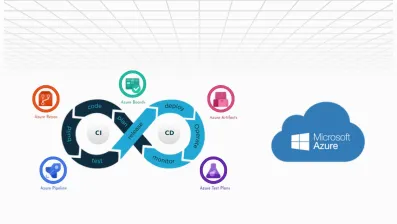Looking to move your workloads to the cloud but still love your on-prem VMware setup?
You're not alone, and luckily, Azure VMware Solution makes that dream transition easier than you think.
In this guide, we’re diving into a comprehensive step-by-step process for migrating workloads to the Azure VMware Solution.
From what it is to how it helps, plus the bumps you might hit along the way—we’ve got it all mapped out for you.
So if you're a business leader or IT pro wanting the flexibility of Azure without giving up your VMware comfort zone, you're in the right place.
What is Azure VMware Solution?
Azure VMware Solution (AVS) is a Microsoft service that lets you run VMware workloads natively on Azure, without refactoring or re-architecting a thing.
It’s like lifting your VMware data center and dropping it right into the Azure cloud.
You get your familiar tools like vSphere, vSAN, and NSX-T, all hosted on Azure’s bare-metal infrastructure.
And the best part? You still manage everything just the way you're used to.
Unlike the Azure vs AWS vs Google Cloud debate, AVS lets you keep VMware’s simplicity while leveraging Azure’s scalability.
Benefits of Azure VMware Solution
Let’s talk about why people love it.
The benefits of Azure VMware Solution aren’t just about cloud bragging rights—they’re about solving real-world challenges.
Here are four benefits that will have you nodding your head:
1. Zero App Refactoring = Zero Headaches
You don’t have to change your existing apps.
Just pick them up and move them as-is—no code tweaks, no stress.
That’s a huge win for teams that can’t afford downtime.
2. Hybrid Cloud Awesomeness
Want the best of both worlds?
AVS lets you extend or burst into Azure when you need to, without ditching your on-prem gear.
It’s like having the cloud on speed dial.
3. Built-in Security + Compliance
You’re covered with Azure Cloud Security features like encryption, threat detection, and compliance certifications.
From encryption to identity management, it’s all included—right out of the box.
4. Tight Integration with Azure Services
Run VMs one day, then tap into Azure Backup, Security Center, or even Azure AI the next.
AVS plays well with the full Azure ecosystem no awkward silos here.
See? The benefits of Azure VMware Solution go beyond buzzwords.
They’re real, practical, and make your IT life a whole lot easier.
How to Migrate Workload to Azure VMware Solution?
So you're ready to move to the cloud—awesome!
But let’s be real: migrating workloads can sound overwhelming at first.
The good news?
Migrating workloads to the Azure VMware Solution doesn’t mean tearing everything down and starting over.
It’s more like packing up your reliable on-prem setup and settling into a shiny, scalable cloud home, with all your stuff just the way you like it.
Let’s walk you through the process for migrating workloads to the Azure VMware Solution, step by step.
Step 1: Evaluate Your Current VMware Environment
First things first—take stock of what you’ve got.
How many VMs are you running?
What’s their resource usage?
Are there apps or dependencies that need special attention?
This step helps you plan for right-sizing in Azure and ensures you're not moving unnecessary clutter.
Plus, it’s a great time to clean up that server sprawl you’ve been ignoring.
Step 2: Set Up Your Azure VMware Private Cloud
Once you know what you’re moving, it’s time to spin up your new cloud playground.
Just like you’d set up Kentico on Azure, deploy your AVS private cloud with dedicated VMware tools.
This gives you a dedicated, isolated environment that mirrors your on-prem setup—but hosted on Azure’s global infrastructure.
You’ll have access to vSphere, vCenter, vSAN, and NSX-T—just like home!
Step 3: Establish Connectivity Between On-Prem and Azure
Now, let’s connect the dots.
Use ExpressRoute or VPN to build a secure, low-latency bridge between your on-prem data center and your AVS setup.
This is crucial for smooth migration and for any hybrid workloads you plan to run in the future.
Once connected, your two environments will feel like one giant, happy network.
Step 4: Start Migrating Workloads to Azure VMware Solution
Time to move your workloads!
You can use tools like VMware HCX (included with AVS) to migrate VMs with minimal disruption.
It supports live migration, bulk moves, and even transformation if needed.
HCX makes migrating workloads to the Azure VMware Solution surprisingly painless.
You can move your apps over one by one or lift-and-shift entire environments at once.
Step 5: Validate and Optimize Your New Setup
Once everything’s moved, test like a pro.
Make sure apps are running smoothly, performance is solid, and nothing broke during the move.
Then, look for chances to optimize—maybe scale up or down resources, integrate with native Azure services, or improve your backup strategy.
This is where you start unlocking the full benefits of Azure VMware Solution—not just for hosting, but for agility and growth.
Step 6: Start Integrating with the Azure VMware Solution Ecosystem
Now that your workloads are up and running, it’s time to supercharge them.
Want better monitoring? Plug into Azure Monitor.
Need backups? Connect to Azure Backup or Site Recovery.
Security? Hello, Microsoft Defender for Cloud.
Integrating with the Azure VMware Solution is what takes your setup from “lift-and-shift” to cloud-first excellence.
Want a team to help handle the heavy lifting?
Our experts are ready to guide you through every step, because going cloud-native doesn’t have to be stressful.
Next up: Let’s talk about what happens after migration and the real-world challenges you might face.
Post-Migration Considerations
So, you've made it to the cloud with Azure VMware Solution—high five!
But wait… before you grab that coffee and chill, there are some crucial boxes to tick.
After migrating workloads to Azure VMware Solution, you’ll want to make sure everything runs optimally, securely, and efficiently.
Think of this stage as “fine-tuning the engine” after building the car.
Here’s what to focus on next:
1] Review Security & Compliance
Cloud environments demand security hygiene, and AVS is no exception.
You should revisit your user roles, identity access policies, and firewall configurations post-migration.
Enable Microsoft Defender for Cloud and configure NSX-T micro-segmentation to keep workloads isolated and threat-free.
Don’t forget to assess your compliance needs—especially if you’re in finance, healthcare, or government. Azure provides a wide array of pre-built compliance templates that you can apply right away.
Security is one of the biggest benefits of the Azure VMware Solution, but only if you set it up right!
2] Set Up Backups and Disaster Recovery
Backing up is like wearing a seatbelt—you hope you’ll never need it, but you’ll be glad it's there.
Once workloads are running in AVS, integrate with Azure Backup and Azure Site Recovery.
These tools ensure that if things go south (hardware failures, accidental deletes, malware), you’re back in action quickly.
Make sure your RTO (Recovery Time Objective) and RPO (Recovery Point Objective) align with business needs.
And always, always test your disaster recovery plan—not once, but regularly.
3] Monitor & Optimize Performance
Just because your apps are in the cloud doesn’t mean you can set and forget.
Monitoring is key to keeping everything humming smoothly.
Use Azure Monitor, vRealize Operations, and Log Analytics to track performance, uptime, latency, and resource usage.
Look for over-provisioned VMs and unnecessary background services—these are cost-eaters in disguise.
Set up performance alerts and auto-scaling rules so you can respond to spikes in traffic or usage without manual intervention.
4] Explore Native Azure Integrations
Now comes the fun part—making your infrastructure do more.
Start integrating with the Azure VMware Solution ecosystem to boost innovation.
Want smarter dashboards? Connect with Azure Monitor and Power BI.
Need to automate infrastructure provisioning? Try Azure DevOps and ARM templates.
You’re not just moving to the cloud—you’re upgrading your entire tech stack.
The beauty of AVS lies in how effortlessly it blends VMware comfort with Azure’s future-forward capabilities.
Challenges While Migrating to Azure VMware Solution (And How to Solve Them)
Migrating to the cloud isn’t just a tech upgrade—it’s a business shift.
And while the Azure VMware Solution offers a powerful bridge between your on-premise and cloud infrastructure, the journey isn’t without its bumps.
Let’s explore some common challenges you may face during the process of migrating workloads to the Azure VMware Solution—and how to navigate them like a pro.
Challenge 1: Compatibility Issues with Legacy Apps
The Problem: Not every legacy application plays nicely with the cloud. Some rely on outdated software stacks, static IPs, or tightly-coupled integrations that may not transition well to the Azure VMware Solution.
The Fix:
- Start with an in-depth assessment using Azure Migrate to identify risky apps early.
- Deploy a test cluster within your Azure VMware Solution to validate app behavior.
- For highly dependent apps, consider refactoring after migration using native Azure services.
Why It Works: You avoid unnecessary downtime while creating a flexible roadmap to modernize gradually without breaking what works.
Challenge 2: Network Complexity
The Problem: A hybrid network setup can get messy—fast. Overlapping IP ranges, DNS mismatches, and improper routing often lead to connectivity headaches in the Azure VMware Solution environment.
The Fix:
- Plan your network architecture in advance: define subnets, IP ranges, and gateways clearly.
- Use Azure ExpressRoute for a fast, private connection between on-prem and Azure.
- Leverage NSX-T to isolate workloads and ensure secure micro-segmentation within the AVS setup.
Why It Works: A well-designed network forms the backbone of your cloud journey, ensuring fast, secure communication across environments.
Challenge 3: Cost Surprises
The Problem: Let’s face it—cloud bills can creep up if left unchecked. Many teams migrate workloads to the Azure VMware Solution without optimizing VM sizes or eliminating idle resources.
The Fix:
- Conduct a cost optimization audit post-migration using Azure Cost Management tools.
- Tag resources and enable budget alerts to monitor usage in real-time.
- Right-size VMs and configure auto-shutdowns for non-critical environments.
Why It Works: This ensures you're getting the benefits of Azure VMware Solution—performance, scalability, and cost-efficiency—without sticker shock.
Challenge 4: Skills & Training Gaps
The Problem: Your team might be VMware veterans, but managing and optimizing the Azure VMware Solution requires a mix of cloud and virtualization skills.
The Fix:
- Invest in training with Microsoft Learn and AVS-specific learning paths.
- Work with experienced partners like DotStark during the migration phase.
- Implement RBAC policies to reduce risk while new users get up to speed.
Why It Works: With the right training and support, your team can confidently manage and evolve your AVS environment long-term.
Challenge 5: Tooling & Visibility Gaps
The Problem: Migrating to the Azure VMware Solution might expose gaps in your current monitoring setup. Lack of visibility can delay responses to performance issues or cost overruns.
The Fix:
- Enable Azure Monitor, Log Analytics, and NSX Manager for complete observability.
- Integrate existing tools like vRealize or third-party APMs like Dynatrace or Datadog.
- Customize alerts and dashboards to keep tabs on critical workloads.
Why It Works: With the right tools, you maintain full control over your infrastructure, no matter where it runs.
Effortless Azure VMware Solution Migration with DotStark by Your Side
Migrating to the cloud doesn’t have to be overwhelming, especially when you have the right experts guiding the way.
At DotStark, we specialize in helping businesses transition their workloads with confidence through the Azure VMware Solution.
As a trusted Azure development company, we streamline your migration journey from planning to execution, ensuring minimal disruption and maximum performance.
Whether you're modernizing legacy infrastructure or scaling up operations, our team ensures your Azure integration is fast, secure, and future-ready.
Partner with DotStark for a migration that’s not just smooth, but smart.
Conclusion
Migrating workloads to the Azure VMware Solution offers a seamless path to cloud adoption without sacrificing the familiarity of your existing VMware environment.
With the right strategy, tools, and expert support, your business can unlock greater scalability, performance, and integration across the Azure ecosystem.
From planning and setup to optimization and ongoing management, this step-by-step approach ensures you get the most out of your migration.
Don’t let complexity slow your cloud journey, leverage the power of AVS with expert guidance to modernize with confidence.
Ready to simplify your transition? Partner with DotStark and make your migration smooth, secure, and successful.
Frequently Asked Questions
Azure VMware Solution allows you to run VMware-based workloads natively on Azure infrastructure. It helps businesses move to the cloud without re-architecting their existing environments.
No! One of the biggest benefits is that you can migrate workloads as is. No refactoring is needed, which saves time and cost.
It offers seamless scalability, enterprise-grade security, hybrid capabilities, and full integration with native Azure services—all while preserving your current VMware investments.
Yes. It includes built-in security controls, compliance certifications, and the ability to extend your existing policies into the cloud environment.
Timelines vary depending on the complexity and volume of workloads. However, with a clear roadmap and the right Azure development company, migrations can be completed in weeks, not months.












 +91 9680599916
+91 9680599916
 vanshika@dotstark.com
vanshika@dotstark.com
